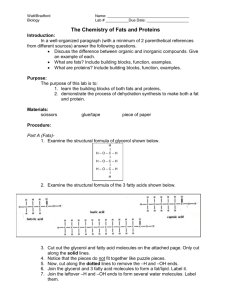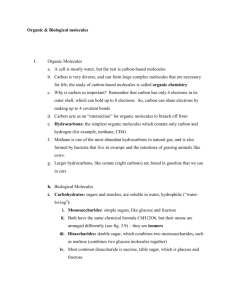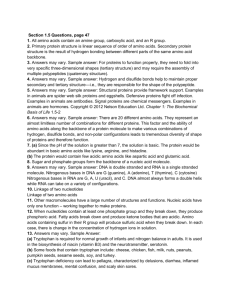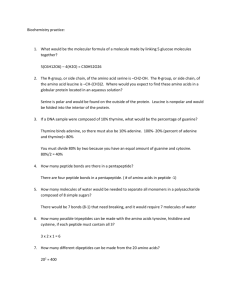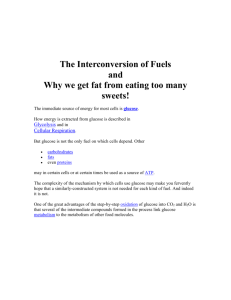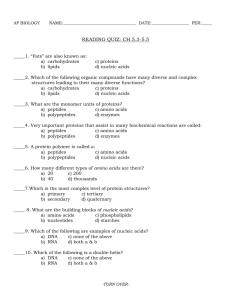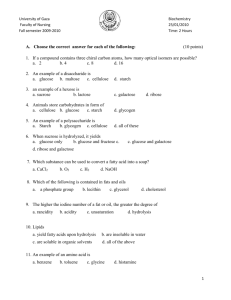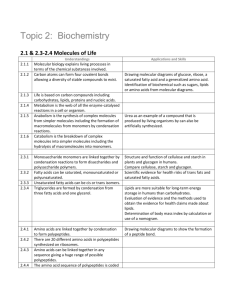Plants and animals can synthesize or create some organic
advertisement
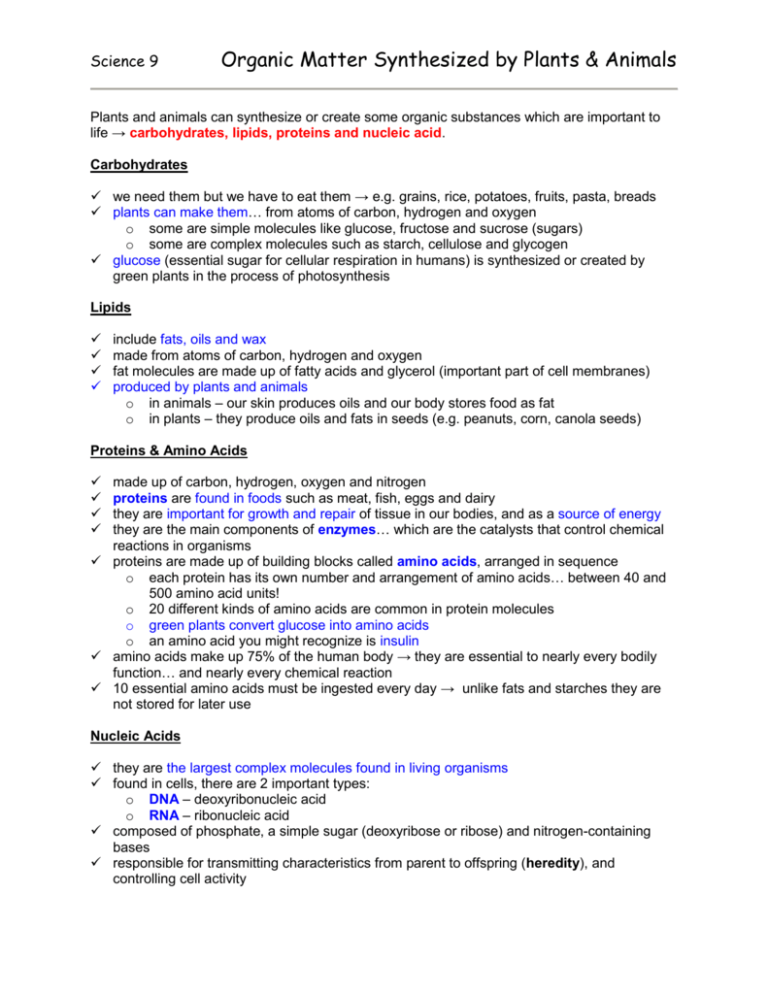
Science 9 Organic Matter Synthesized by Plants & Animals Plants and animals can synthesize or create some organic substances which are important to life → carbohydrates, lipids, proteins and nucleic acid. Carbohydrates we need them but we have to eat them → e.g. grains, rice, potatoes, fruits, pasta, breads plants can make them… from atoms of carbon, hydrogen and oxygen o some are simple molecules like glucose, fructose and sucrose (sugars) o some are complex molecules such as starch, cellulose and glycogen glucose (essential sugar for cellular respiration in humans) is synthesized or created by green plants in the process of photosynthesis Lipids include fats, oils and wax made from atoms of carbon, hydrogen and oxygen fat molecules are made up of fatty acids and glycerol (important part of cell membranes) produced by plants and animals o in animals – our skin produces oils and our body stores food as fat o in plants – they produce oils and fats in seeds (e.g. peanuts, corn, canola seeds) Proteins & Amino Acids made up of carbon, hydrogen, oxygen and nitrogen proteins are found in foods such as meat, fish, eggs and dairy they are important for growth and repair of tissue in our bodies, and as a source of energy they are the main components of enzymes… which are the catalysts that control chemical reactions in organisms proteins are made up of building blocks called amino acids, arranged in sequence o each protein has its own number and arrangement of amino acids… between 40 and 500 amino acid units! o 20 different kinds of amino acids are common in protein molecules o green plants convert glucose into amino acids o an amino acid you might recognize is insulin amino acids make up 75% of the human body → they are essential to nearly every bodily function… and nearly every chemical reaction 10 essential amino acids must be ingested every day → unlike fats and starches they are not stored for later use Nucleic Acids they are the largest complex molecules found in living organisms found in cells, there are 2 important types: o DNA – deoxyribonucleic acid o RNA – ribonucleic acid composed of phosphate, a simple sugar (deoxyribose or ribose) and nitrogen-containing bases responsible for transmitting characteristics from parent to offspring (heredity), and controlling cell activity





